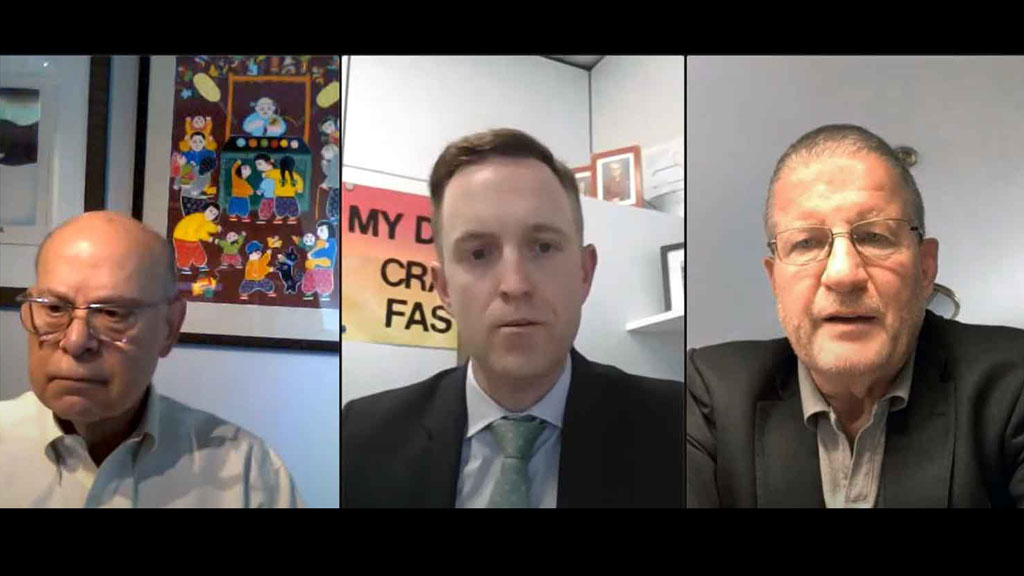Metrolinx and Infrastructure Ontario CEOs say they are going to focus on contract delivery, risk transfer and early contractor involvement as they deliver major transit projects across the province.
Phil Verster, president and CEO of Metrolinx, and Michael Lindsay, president and CEO of Infrastructure Ontario, were the guest speakers during a recent fireside chat hosted by the Canadian Council for Public-Private Partnerships (CCPPP).
The session, hosted by CCPPP president and CEO Mark Romoff, addressed how the two organizations are working to deliver the Greater Toronto and Hamilton Area (GTHA) transit program and the $70 billion approved project list for the next 10 years.
“We are very much focused on what is the way to procure and deliver the remaining scope of our forward project list. We’ve seen interesting things that are helping us along this journey,” Verster told the virtual audience. “The biggest issue always on these projects is quite simply the risk transfer.
“It’s part of our ongoing strategy of how we get risk assigned to parties best equipped to manage that risk.”
One approach is taking large projects and fragmenting it into packages which are awarded to the market based on their specialty, explained Verster. The other is early contractor involvement in the design phase and a development phase where parties work together.
“I think where we are getting to now is the meat and potatoes of how do we really create better delivery models, long-term delivery models that start off on better footing, works on better footing during the construction phase and provides you with better reasons for success for the maintenance and delivery phase that follow thereafter,” said Verster. “We’ve got to do this. Fixed price, risk-based, adversarial, arms-length contract delivery is not the right way to go forward. We need to figure out how to do this better and we are.”
Shifting away from focus on contract form
If the design phase isn’t done right, everything else suffers, Verster added.
That’s why it’s important to get constructors and engineers involved in the development phase up front before the price is finalized.
“Everyone focuses on contract form but that’s not the starting point of the conversation. The start of the conversation is what’s the risk transfer and how do we figure out how to contain the risk,” said Verster.
“Contract form is an outcome, a decision at the end of the process that should not drive our thinking at the front end of the process. The front end of the process should be about how do we eradicate risks for both of us, how do we fix up which one of us will do what risks and then how do we work together to deliver that.”
Lindsay agreed there is a tendency to fixate on contract forms, but the objectives should predict what contract form is used.
“In order to make these projects a reality I think we intuitively understand that they won’t all be delivered using the traditional models of P3 (public-private partnership) that were our bread and butter,” he said. “For us it’s really going to be about the right contract form for the right job and across all contract forms trying to find ways to drive more collaboration to more proactively identify the risks that are going to prove troublesome in these projects and come up with ways to incentivize both partners and contracting authority to solve them.
“The intrinsic characteristics of a project can predict oftentimes the approach we will take,” he added. “It’s not a black and white, we used to do this, we now do that. I think it’s about solving for objectives on each project as well as we can.”
The road ahead
With the COVID-19 pandemic, the market has evolved and accelerated.
“We are looking at new approaches to contracting. How we do the remodel selection, refinements for procurement approaches to make sure we are getting the right balance in respect of technical wherewithal and sophistication of design alongside side of price and financial envelope,” Lindsay explained.
One of the questions from the virtual audience was whether the business case for major transit projects such as the Ontario Line will be affected by the decrease in ridership and the increase in working from home.
“This may seem counterintuitive or may come as a surprise, but the business case is unaffected,” Verster stated. “You’ve got to be realistic here. We are building these subway projects for the next 100 years.
“The fact is 100,000 people join the Greater Toronto Area economy every year and there is nothing to suggest that’s not going to continue.”
Follow the author on Twitter @DCN_Angela.











Recent Comments